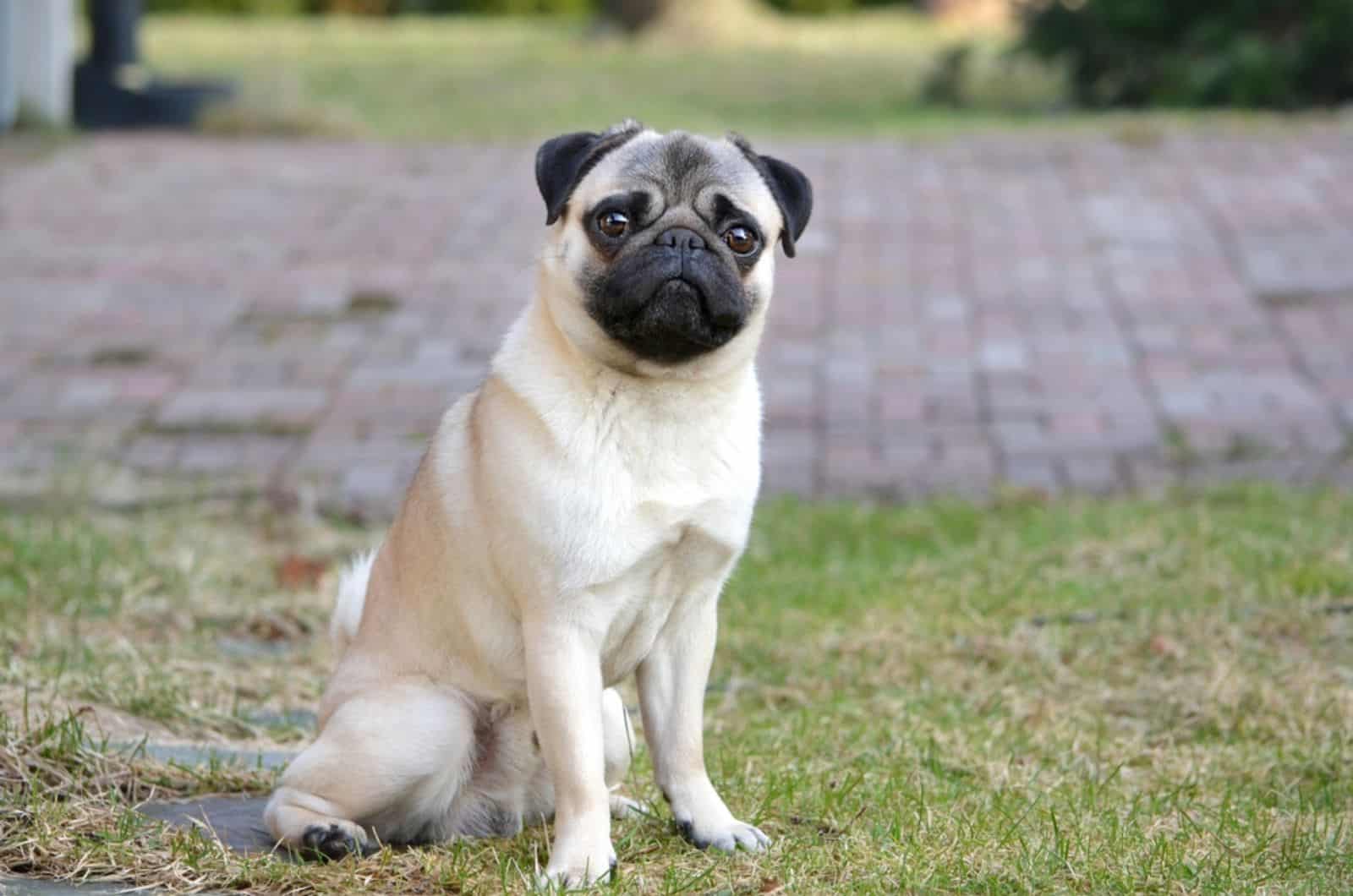You already know how adorable fawn Pugs are. These cute, cuddly babies may be found all over Instagram. You’ve come to the perfect site if you’re considering bringing a pug home. In this blog, we’ll go over everything you should know before bringing a fawn Pug into your home.
This loving dog is the perfect dog breed for people who live a busy lifestyle. They perfectly fit into an apartment since they don’t require much space. The ideal dog breed to have in an urban area is definitely the fawn Pug!
Pugs are sweet, affectionate dogs, but they could have some health problems. If you’re considering purchasing a pug of your very own, you should completely understand their requirements.
By the time you finish reading this article, you’ll be prepared to decide. Let’s find out, then. Will the fawn Pug be the ideal pet for you?
What Is A Fawn Pug?
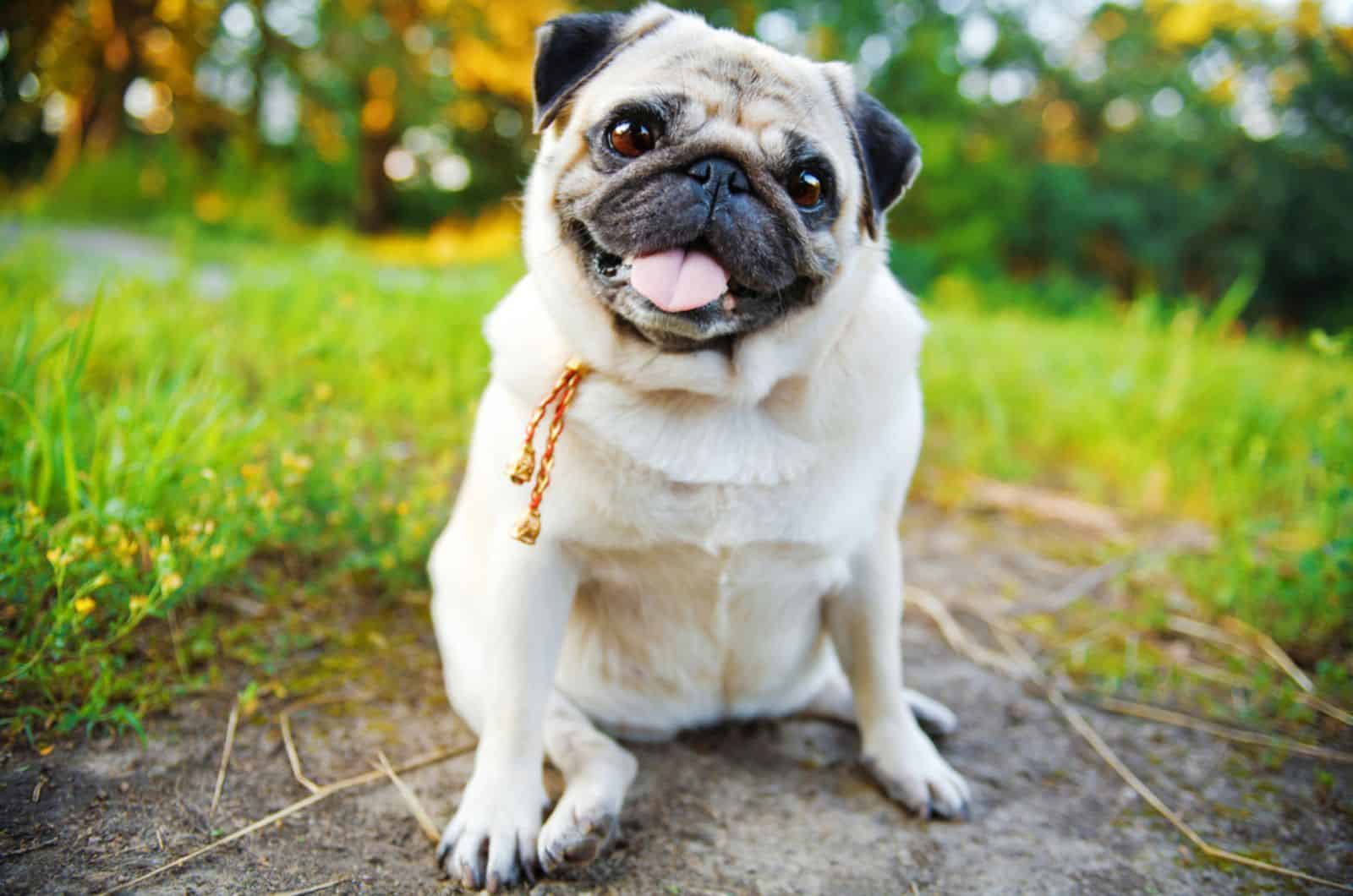
Pugs with a fawn coat can be identified by their light hue. Just by looking at them, fawn Pugs can be recognized from other varieties.
A popular color variation of the Pug breed is the fawn Pug. The dog has a light-colored coat with a bit of a cream or tan undertone. Fawn Pugs can have different shades of fur on different parts of their body. The fawn Pug is similar to the other Pug breeds in most respects except in color.
A fawn Pug is a specifically-colored Pug dog, which is one of the most famous Pug colors in general.
When we go back far enough, there are a few specifics regarding the fawn color in history. However, it was pointed out that Pugs are an old breed, and that the fawn hue came about as a result of selective breeding.
By the end of the 19th century, this brachycephalic dog breed had been standardized, and fawn hair was widely utilized as a base in competitions as it became more and more popular throughout breeding procedures around the world.
Reputable kennel groups all over the globe generally regard the fawn Pug (as well as black fur coloring of Pugs) as the standard. Pugs that are fawn in color are more common in dog movies and television shows because they are more popular with animal enthusiasts.
These Pugs are also available in a variety of colors, including standard fawn, apricot fawn, and silver fawn. They continue to be the same breed of dog, nevertheless. These hues are merely used to describe the fur color and tint.
History Behind The Fawn Pug
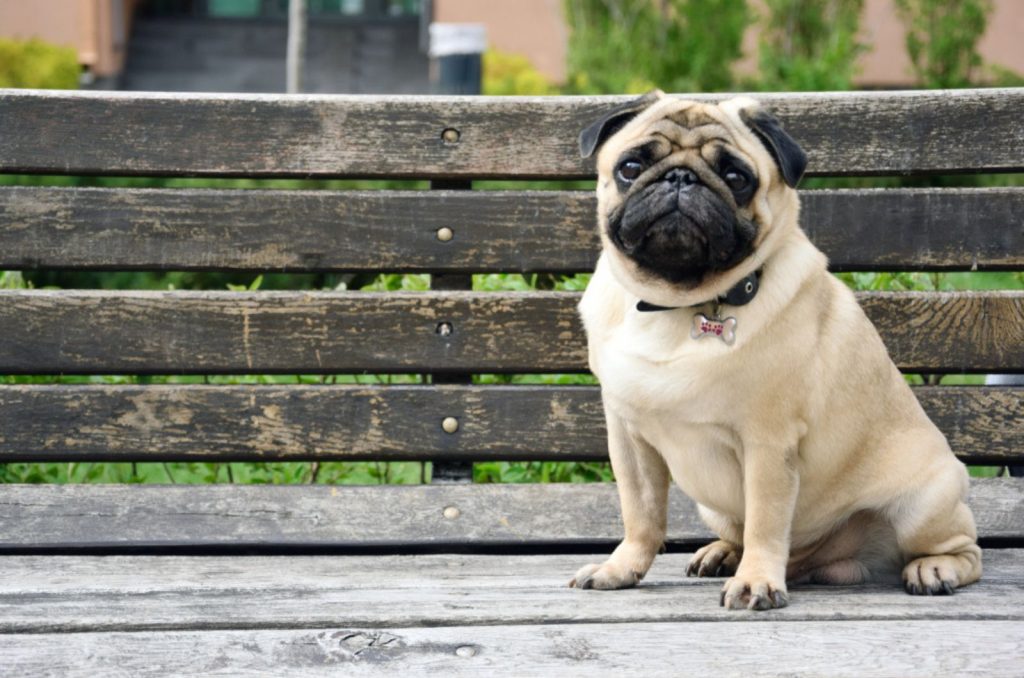
The most well-known breed of the Pug is the fawn Pug. Pugs are an old breed of dog.
They can be found in literature from as early as 600 B.C., when they were referred to as the short-headed, short-legged dog. Their origins can be dated back to 400 B.C. Naturally, they didn’t resemble modern pets in the least.
Pugs were initially developed as royal companions in China. China began conducting business with European powers by the 1500s. Pugs rose to popularity in Europe as special presents that were given.
Pugs evolved into a more traditional breed in the 19th century through meticulous breeding, and they were only distinguishable by their colors: fawn, and black. Around this period, England’s renowned dog shows got underway, and in 1861, the very first Pug was displayed.
The English Pug gained popularity as a result of the worldwide Pug popularity. The Willoughby Pug evolved into a predominantly black dog, with white markings. With an apricot-fawn coat, the Morrison pug had a highly distinctive appearance.
Two genuine Chinese pugs were imported to England in the middle of the 19th century. The development of the contemporary pet Pugs was shaped by their son, which was regularly bred.
What Does A Fawn Pug Look Like?
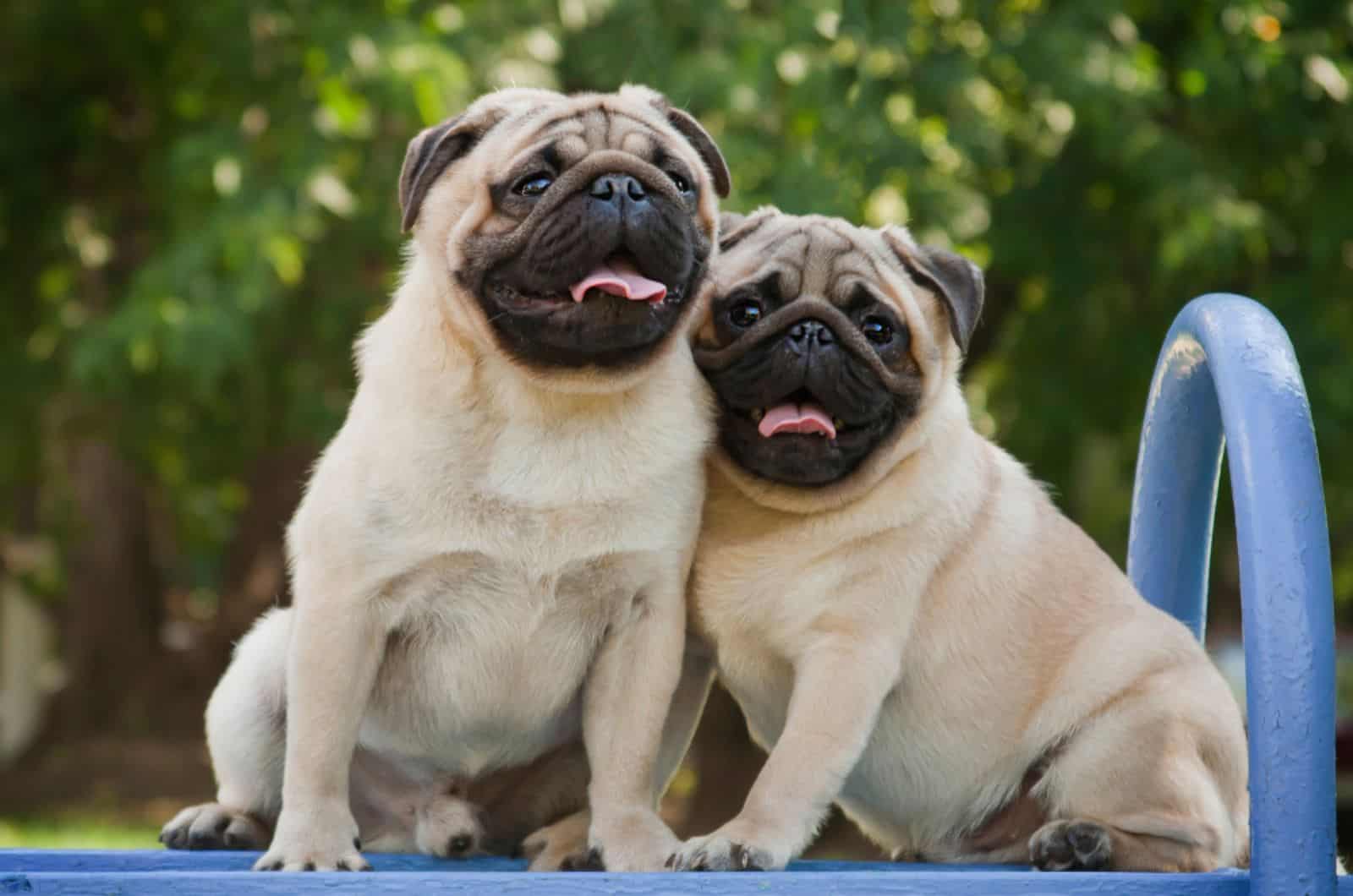
A small-breed dog known as the fawn Pug has a very light cream color and a pale tan coat that may even be slightly yellowish. Along with having a flat face and a round head, they also have a brachycephalic snout.
Fawn-colored Pugs have a round skull, a wrinkled nose, a short muzzle, large, prominent eyes, and non-erect ears. Pug dogs’ legs are short, and their body is typically compact, with a curling tail at the back. In dog competitions, the darker mask is greatly desired.
Additionally, they have “traces,” which are deeper brown or black hairs on their back. Typically, these extend from the bottom of the tail to the back of the head. If the fawn puppy grows older, the traces can disappear.
Additionally, there might be a little variation between male and female Pugs. However, both sexes reach heights of between 10 and 14 inches, and weights of 13 to 20 lbs.
Despite coming from a small breed, teacup Pugs that do not have a pedigree cannot be confused with fawn Pug puppies since they are larger and heavier.
These Pugs come in variations of silver or apricot tones as was already described. Fawn is a general term; thus, some kennels classify them as fawn-colored dogs while others distinguish them under apricot Pugs as well as silver Pugs.
Apricot fawn-coated Pugs have a medium vanilla look that is deeper than a fawn Pug’s appearance. The lightest color is found in silver fawn Pugs, which typically have an exceptionally pale coat with a silver tinge.
On their face, they might have markings like masks, but each purebred Pug could have a different arrangement of these patterns. Additionally, the color of the majority of Pugs is not consistent. Some may have a coat with lighter or darker tones.
Pugs in the rarer non-fawn colors such as brindle, panda, and chocolate are also available. But, those topics will be covered in other articles.
Pug Coat Colors
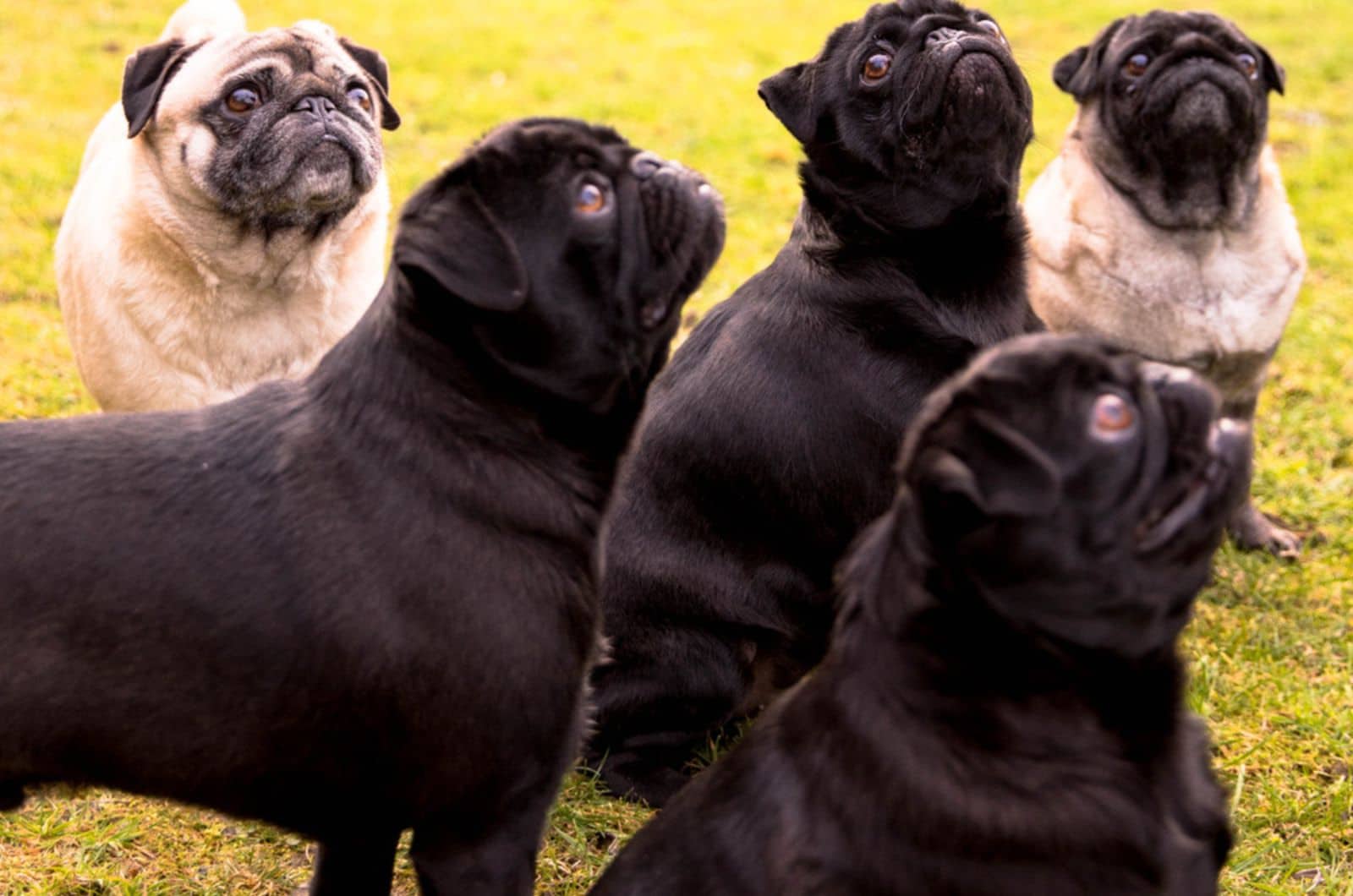
This dog breed with an affectionate personality is a social media star. Thanks to the many different Pug colors, people tend to have them in a bunch of interesting colors.
Whether a dark coat or a light coat, this curled tail is recognizable everywhere. Whatever the color, each one of them fits this dog well! Here are a few of the most popular Pug colors:
- Black Pug
- Fawn Pug
- Silver Fawn Pug
- Apricot Fawn Pugs
The Personality And Disposition Of The Fawn Pug
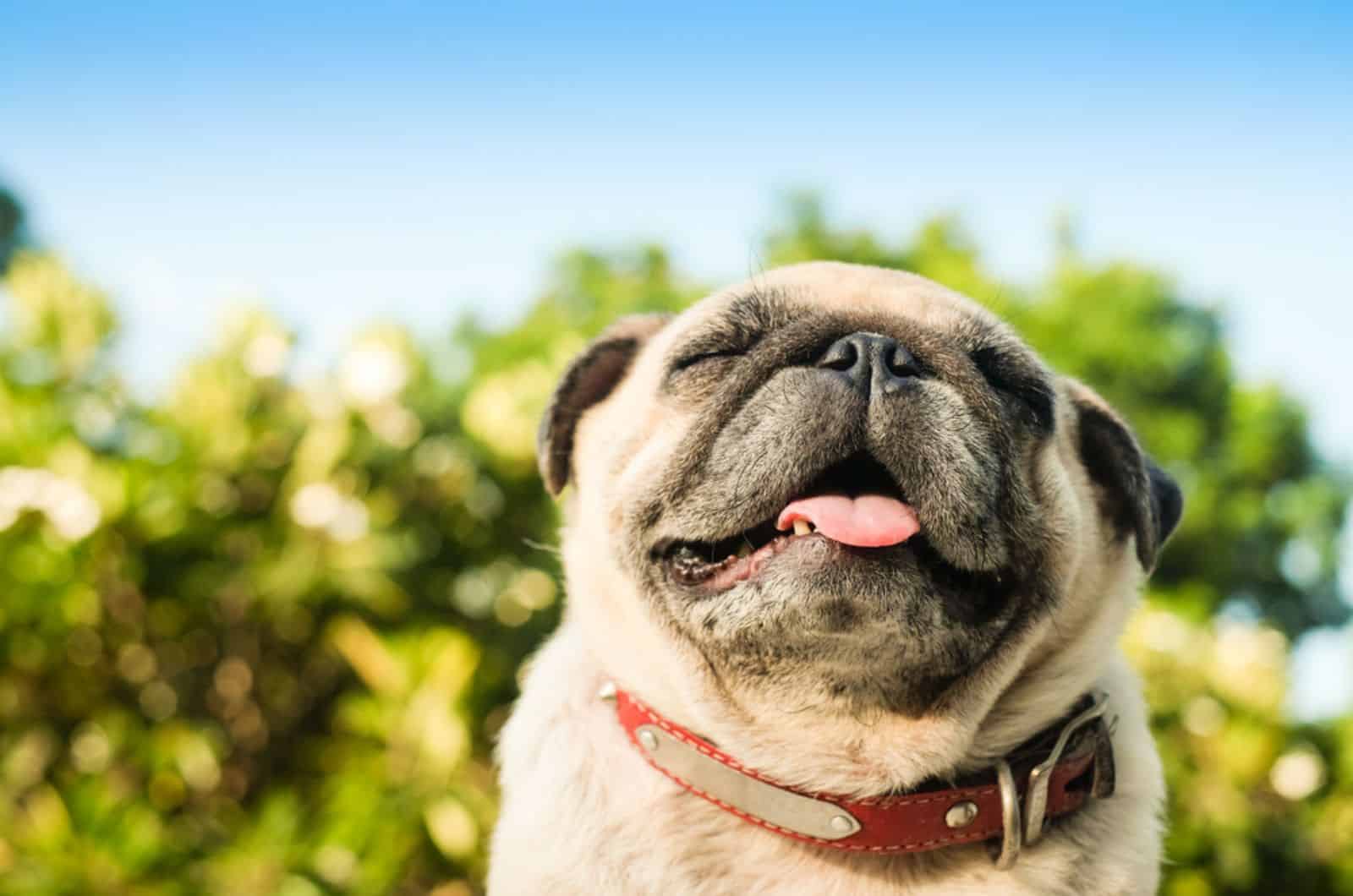
Pugs have been known to make excellent family pets and companions for years. Most dog lovers adore Fawn Pug pups because of their calm, endearing, playful, and cuddly demeanor.
Fawn Pugs do not accept being left by themselves for extended periods of time, and they have a strong attachment to their owner, which is an important factor to take into account. Consequently, a fawn Pug puppy is ideal for you if you desire a clingy friend.
They get along well with kids and other animals, especially cats. As a result, you won’t need to worry about bringing them home with various companions. To learn how to behave responsibly, they must still be socialized early.
Purebred Pugs like these fawn puppies are smart, and they do well with training and positive reinforcement. However, because most Pugs are stubborn, you may need to defend your position.
Additionally, because Pug owners tend to be energetic, they should exercise them for around 30 minutes to release any pent-up energy and prevent destructive behavior.
It’s crucial to understand that your Pug’s temperament is unaffected by the color of its coat. Everyone’s heart can be won over by Pugs in fawn, black, and non-standard colors.
Is The Fawn Pug A Good Family Dog?
Pugs typically have lovely personalities. They are charming, playful, and frequently humorous. These energetic dogs also enjoy sleeping a lot. So, anticipate a tale of two halves, with your tiny pal alternately hopping around, and then napping in a cozy corner.
Pugs, especially fawn pugs, make fantastic companions because of their warm and caring disposition. They make ideal “entry-level” canines. In general, pugs don’t dig, bite, or bark excessively, making them great companions for seniors, and responsible family dogs.
Pugs may make odd noises because of their flat face, but don’t be worried. They have an unusual charm that includes their wheezing, snoring, heavy breathing, and barking.
Given their potential for stubbornness, make absolutely sure your Pug understands who is in charge. Making them familiar with different surroundings and different people, as well as different animals, will play a huge role in making the Fawn Pug a dog with a well-rounded personality.
This dog was known from ancient times as a companion dog. Therefore, your family shouldn’t expect anything less. You will get a dog that is loyal, playful, and goofy, and I can guarantee that the kids will love its personality.
Is The Fawn Pug A Healthy Dog Breed?
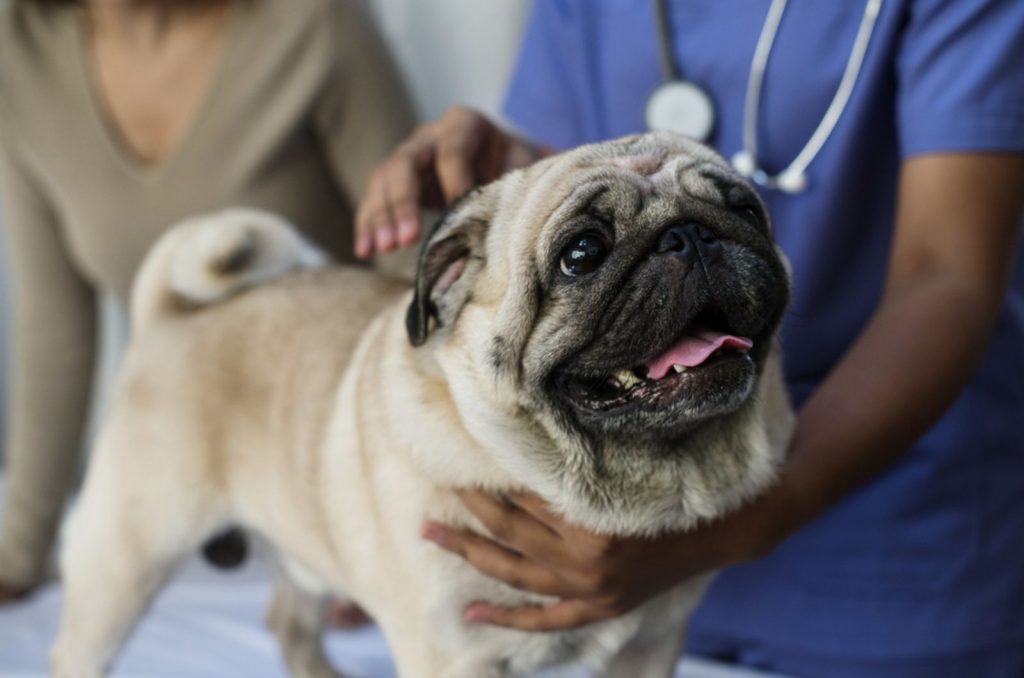
Although Pugs are often healthy, they are susceptible to some health issues, like all breeds. Even though not all Pugs may contract any or all of these illnesses, it’s still vital to be aware of them if you’re thinking about getting one.
Find a reputable breeder who will provide you with the health certificates for both of your puppy’s parents if you are purchasing a puppy.
What Is A Fawn Pug’s Lifespan?
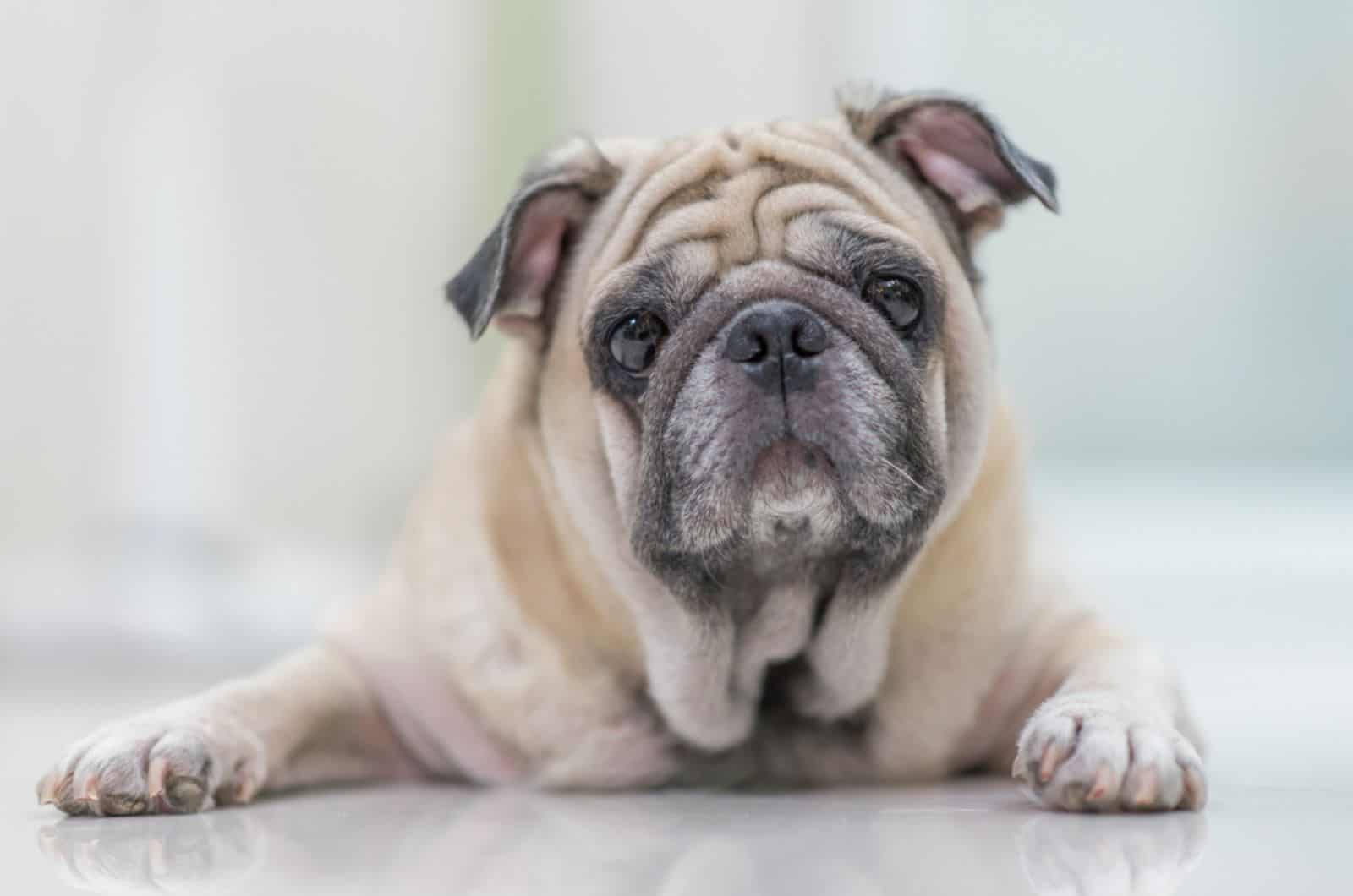
Since this dog breed is a small one, the Kennel Club of America, thanks to the data about not-so-impactful health conditions, says that this dog can live long.
The average life expectancy of the Pug dog can be anywhere from 11 to 16 years, depending on the way you take care of the fawn Pug, and depending on its genetic background.
Similar to humans, female Pugs often live longer than their male counterparts. Pug females typically live for 13.2 years, while males live for only 12.8 years on average.
But, remember that these figures are averages. It’s typical to hear stories of Pugs living a longer or shorter life. We shall discover that a variety of factors contribute to this variation.
Possible Health Issues Of A Fawn Pug
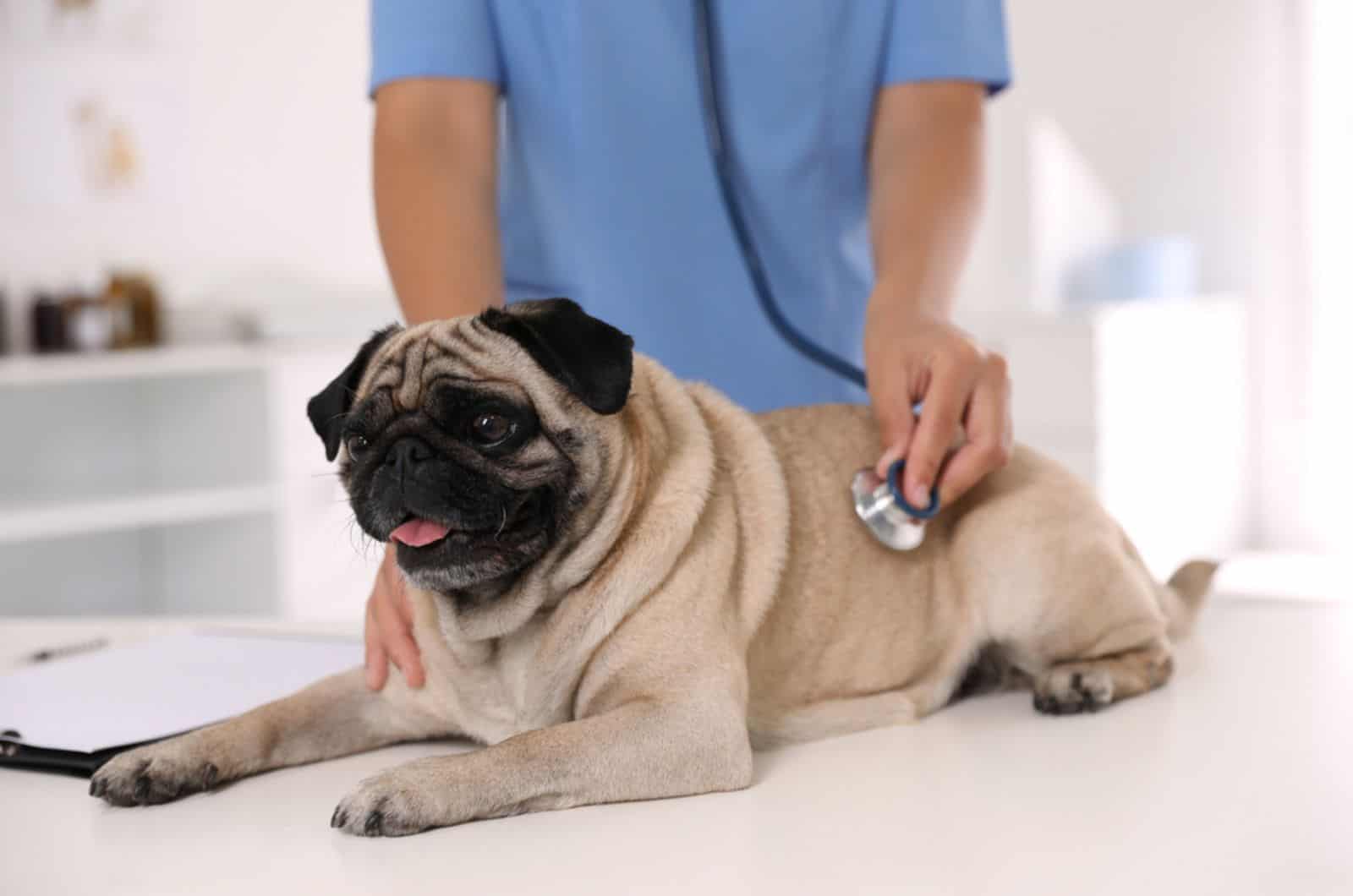
For hip dysplasia, together with elbow dysplasia, thyroid problems, and von Willebrand’s disease in Pugs, you may anticipate seeing health certificates from the Orthopedic Foundation for Animals (OFA).
Auburn University’s certificate is best to have for problems, such as thrombophilia and parvo.
The Canine Eye Registry Foundation (CERF) will certify that the eyes are healthy. You can check the OFA website to validate health approvals.
1. Brachycephalic Obstructive Airway Syndrome
Cephalic refers to the head, while brachy indicates short. Because of this, brachycephalic dogs have shorter skull bones, which give their face and nostrils a pressed expression.
The anatomy of the face and nose, as well as its relationship to other muscles and ligaments, are affected as a result of the shorter face and nose bones; several of these changes may result in physical difficulties for the dog.
A specific group of upper airway anomalies that impact brachycephalic dogs is referred to as brachycephalic airway syndrome.
‘Congenital obstructive upper airway illness’ or ‘brachycephalic respiratory syndrome’ are other names for this ailment. The following are some of the upper airway anomalies seen in this syndrome:
Stenotic nares: The nostrils of dogs with stenotic nares are abnormally narrow or tiny, which limits the amount of air that may enter them.
Elongated Nasopharyngeal turbinates: Nasopharyngeal turbinates are tissue-covered ridges of bone that assist in warming and moistening the air that is taken.
These can restrict airflow to varying degrees when they extend past the nose and reach the pharynx (the region behind the mouth and nose.
Stretched-out soft palate: The entry to the trachea (windpipe) in the back of the throat is partially blocked by the dog’s enlarged soft palate, which is the soft section of the mouth’s roof that is excessively long for the size of the mouth.
2. Demodectic Mange
All dogs travel with a little companion known as a Demodex mite, sometimes known as demodicosis. In the first few days after birth, the mother dog infects her puppies with this mite. Only the mother may transmit the mite to her pups.
Demodex mites are found in follicles, and are typically not a concern. But, your Pug might acquire demodectic mange if its immune system is insufficient or damaged.
Demodectic mange could either be specific to one area or widespread. On the head, neck, and forelegs, spots of red, scaly skin with hair loss can be seen in the localized form.
It is regarded as a puppy ailment, and it frequently goes away on its own. However, you should still bring the dog to the vet since demodectic mange can develop into its generalized version.
Senior dogs and young-adult dogs are more susceptible to generalized demodectic mange, which involves the entire body.
Over its entire body, the dog develops skin infections, bald areas, and patchy skin. All dogs that get widespread demodectic mange should be neutered or spayed, according to the American Academy of Veterinary Dermatology as there is a genetic relationship.
3. Eye Problems
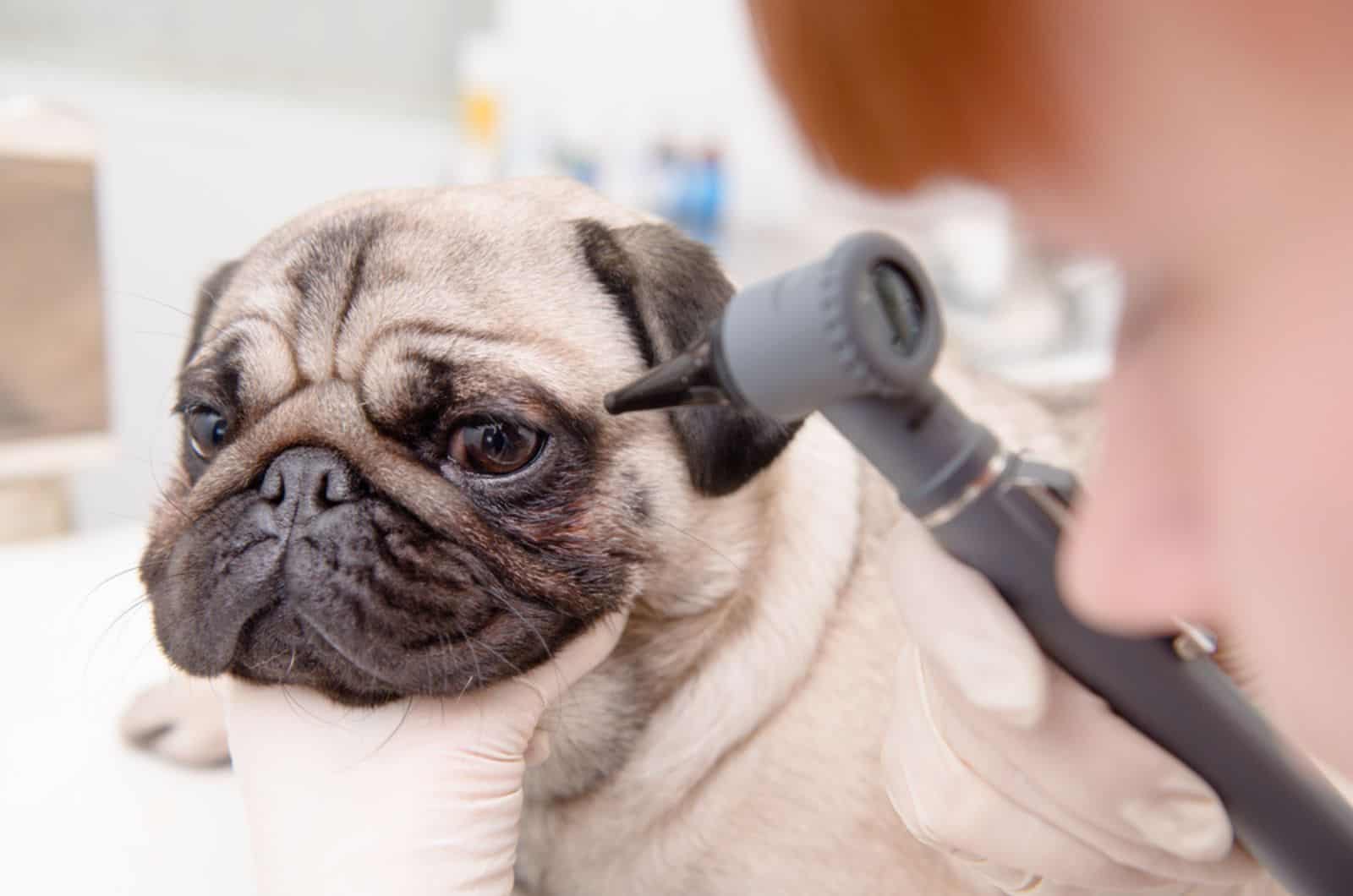
Pugs are susceptible to a number of eye conditions because of their huge, bulging eyes. These issues include:
- Progressive retinal atrophy, which is a degenerative condition of the retinal visual cells that causes blindness.
- Proptosis, where the eyeball is forced out of the socket and the eyelid clamps behind it.
- Distichiasis, in which the eyelashes grow abnormally along the edge of the eye.
- Entropion: the lower lid moves more inward, which causes the lashes and the coat on the lid to irritate the eye of the Fawn Pug.
Pugs can develop pigmentary keratitis and keratoconjunctivitis sicca. They could either happen all at once or separately. The lack of sufficient tear production in the eyes results in dry eyes.
If this is the cause, testing can be done by your veterinarian to identify it. This condition can then be treated with medication and extra care. Black dots on the cornea are a symptom of pigmentary keratitis, especially in the region next to the nose.
Blindness may result if the pigment completely encases the eye. The pigment in the eyes can be removed by using the medicine that your veterinarian might prescribe to help maintain the eyes moist. Each of these eye disorders calls for ongoing treatment and attention.
4. Joint Problems
Legg-Calve-Perthes disease is an additional condition that affects the hip joint. This disease is prevalent in several toy breeds.
The blood flow to the body of the femur, which is the huge back leg bone, is reduced in a Pug with Legg-Calve-Perthes, and the part of the femur which attaches to the pelvis starts to deteriorate.
The initial symptoms of Legg-Calve-Perthes, including limping and muscular atrophy in the leg, typically appear in puppies between the ages of 4 and 6 months.
The issue can be treated surgically by removing the diseased femur from the body, so that it is no longer connected to the pelvis. The surgical scar tissue develops a fake joint, and the pup is typically pain-free as a result.
Patellar Luxation: The patella, or kneecap, can become luxated. Anatomical portion dislocation is referred to as luxation. Patellar luxation is a painful condition in which the knee joint (typically of the back leg) moves out of and into place.
Although it can be disabling, many dogs with this illness have a reasonable life.
5. Pug Dog Encephalitis
The fatal inflammatory brain condition known as PDE only affects Pugs. There is currently no method to identify or treat this ailment in Pugs, and doctors are unsure of why it occurs.
Only after the dog has passed away can tests be performed on its brain tissue to determine whether it had PDE.
Young dogs are typically affected by PDE, which results in seizures, circles, blindness, coma, and death. It may take a couple of days or weeks to occur.
The Pug Dog Club of America, and the American Kennel Club Canine Health Foundation are funding research initiatives to try to understand more about Pug Dog Encephalitis because it appears to have a genetic component.
Taking Care Of A Fawn Pug
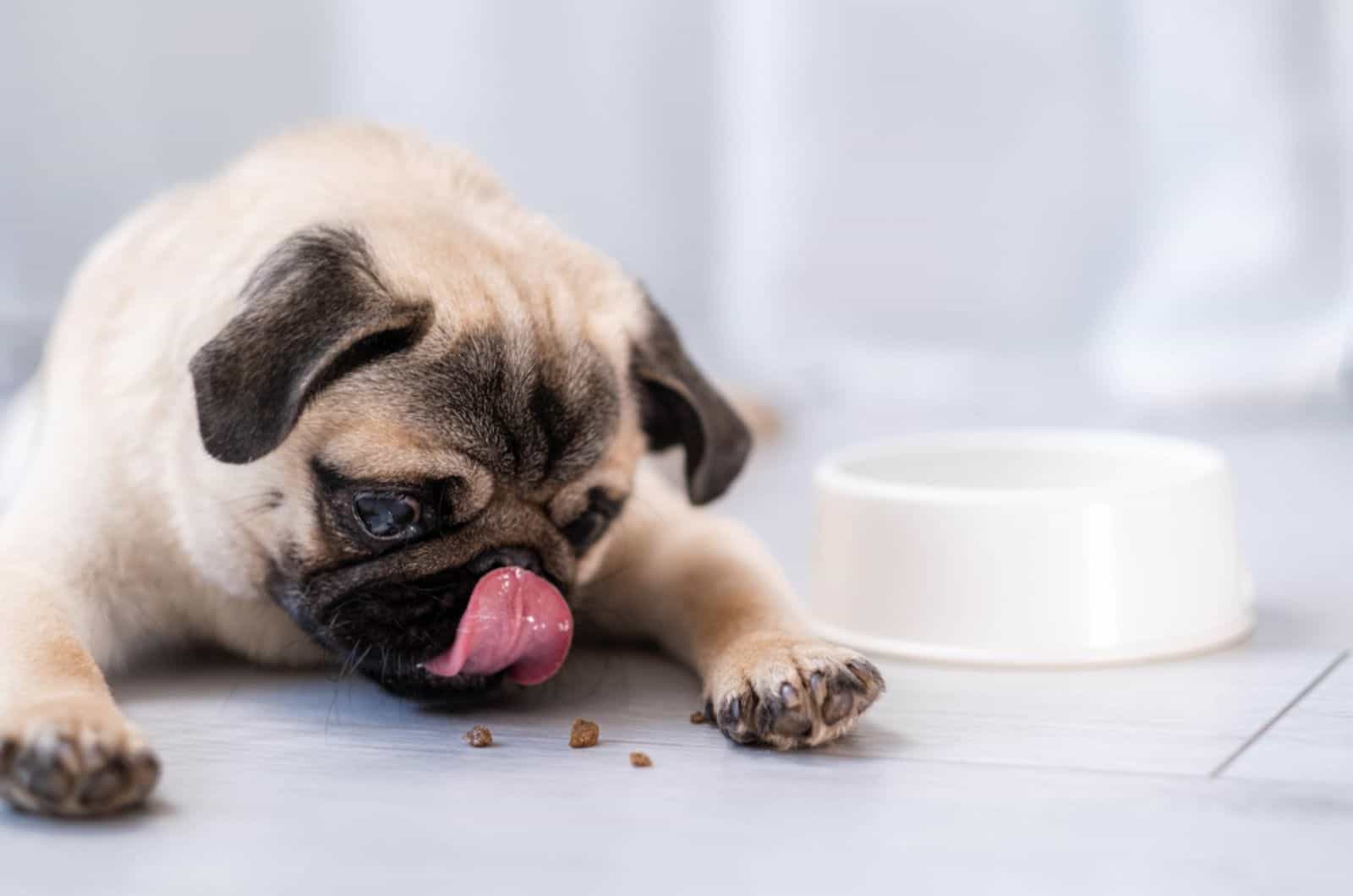
Despite being boisterous and lively, the Pug is a low-maintenance pet that is perfect for seniors. They are also an excellent choice for apartment residents because they are a petite, calm breed, and are not particularly active indoors.
If the fawn Pug doesn’t take a stroll or even have some playtime, be prepared to be entertained by some silly antics because of its small size, which conceals its high level of energy.
However, because they are vulnerable to heat and humidity, you should make sure your Pug will not spend excessive time outside if you reside in a hot or humid area.
Food And Nutrition
It’s crucial to understand what to serve your Pug because this small dog enjoys eating. They’ll eat just about anything, which makes them vulnerable to obesity.
A full and well-balanced meal of commercially-produced dog food will be beneficial for these pets. There are literally dozens of different dog food brands that are suitable for this breed.
Every kind of dog food works, but it would be best to choose high-quality food designed for “all life stages” as it will give your dog the nutrition it requires.
These dogs, as I said before, will eat just about everything. You can make your own homemade dog food or come up with a special recipe for your dog that includes products of human-grade quality if you do not wish to feed them commercialized dog food.
Cleaning And Grooming
Pugs are a breed with a double coat despite having a short coat, and Pugs are typically black or fawn in color. All Pugs have a short, flattened, black muzzle, and the fawn hue can have varying shades, including apricot or silver.
Do not be fooled by their short, silky coat. Pugs shed a lot, especially during the summer. Being a good Pug owner, it would be wise to change your wardrobe to lighter-colored apparel that better conceals hair.
After that, routine brushing and washing will aid in maintaining the coat’s health and minimizing shedding. Although some people wash their Pugs more often, a monthly bath is more than enough.
To assist in eliminating loose hair, your dog needs to be brushed once per week. You can give it a bath once a month as long as you use a shampoo made specifically for Pugs in order to prevent irritated skin.
Since these house dogs typically don’t grind down their nails outside as active breeds do, regular nail clipping is necessary. Every few weeks, it’s a wise idea to wipe the Pug’s ears, too.
The Pug’s facial creases need special attention. These creases create breeding grounds for infections if you allow them to get unclean or damp.
After bathing, the creases must always be fully dried, and they should be removed between baths. Some owners wipe out the wrinkles with a dry cotton ball, whereas others use special baby wipes.
The Pug’s large eyes also require extra attention. Because of their protrusion, the eyes are exposed to harm and discomfort from detergents and chemicals.
The Pug is one of many tiny breeds that can develop gum disease. This can be avoided by regularly cleaning its mouth with a tiny, soft toothbrush as well as dog toothpaste.
Exercise
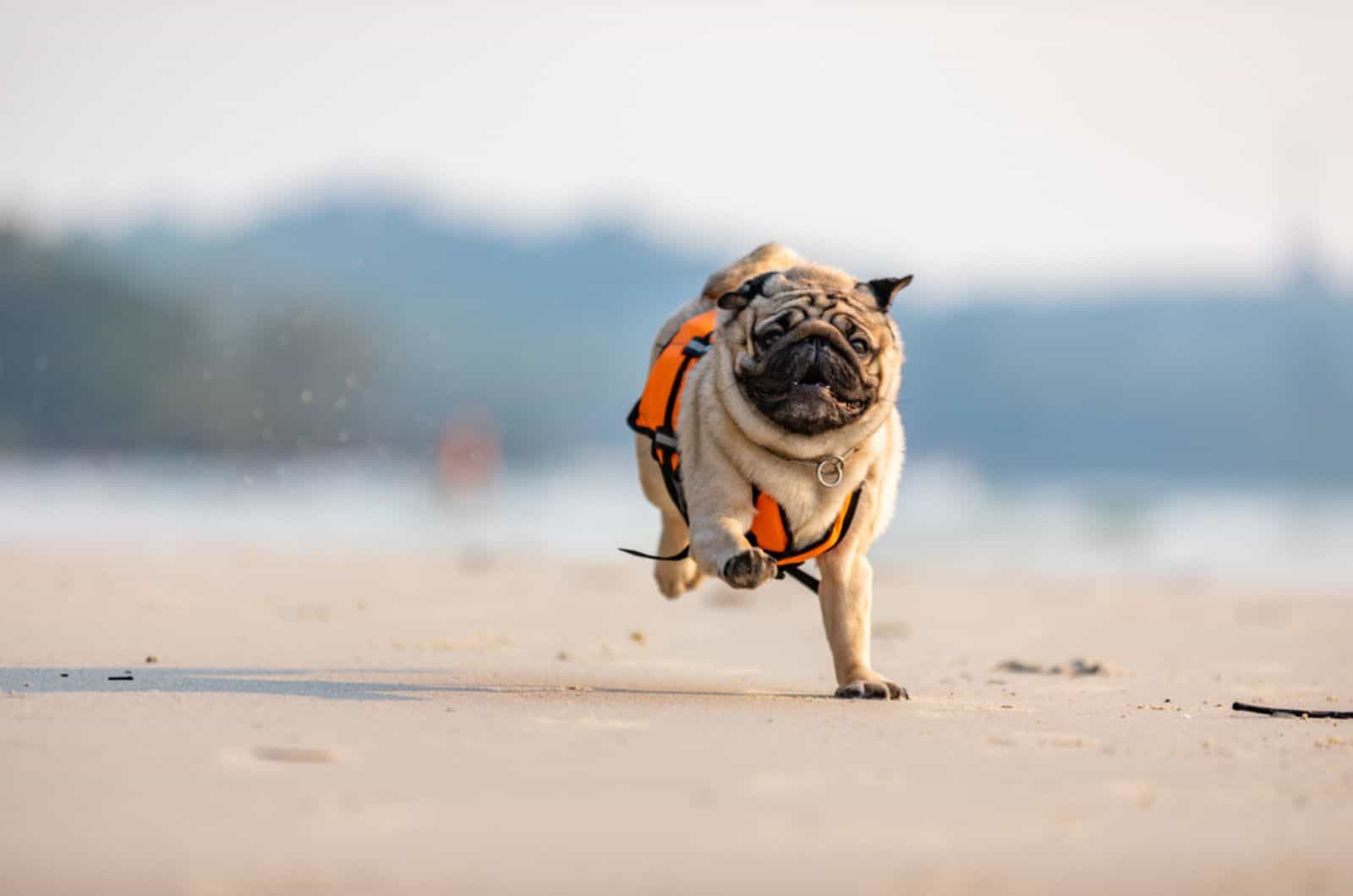
All dogs, including pugs, require daily exercise. However, it’s crucial to refrain from overworking them or working out in extremely hot or muggy conditions.
They have constrictive nasal passages that make breathing challenging, particularly in warmer weather. The majority of pugs will be content to play in the back yard or for a 30-minute stroll through the neighborhood.
Make sure your dog is wearing a canine life jacket if you’re planning a boating excursion or taking it to the lake in case it falls into the water (they are not the best swimmers, and may have some trouble because of their flat face).
Your fawn Pug isn’t any different from other dogs in need of regular exercise. It’s crucial to avoid overdoing it and overheating your Pug.
Due to their acute nasal, palate, larynx, and tracheal features, Pugs are brachycephalic (flat-faced with a short nose), and some of them may have impaired airways.
Not all Pugs have these ailments, but as the dog ages, they could appear. If your Pug has a tendency to overheat quickly, you should generally avoid training it in the heat and humidity as well as circumstances where it could become overexcited.
Instead, try to spread out your workout bouts throughout the day. Pugs normally require less than an hour of movement every day because they have relatively low energy levels and minimal activity requirements.
Even if some Pugs do appreciate canine activities like agility, a quick stroll or enjoyable inside playtime will do. Fawn Pugs prefer quieter games like fetch or playing with dog toys.
Training
It can be easy to train your Pug. Pugs are people-pleasers, and they will work hard for you. They are always upbeat, bright, intelligent, and highly driven by food, which makes them quite simple to train.
While your Pug is still a young puppy, start with some fundamental obedience training (such as sit, stay, and come), and remember to include a lot of early socializing as well.
By enrolling your dog in group training sessions or joining a dog activity like agility, obedience, or rally, you can achieve this in part. However, it’s also essential to take your Pug everywhere and let it socialize.
Proper Socialization
When you hear the word “socialization,” you might picture a bunch of puppies playing together, but the crucial developmental process involves a lot more than other dogs or even human people.
The right kind of socialization enables your new Pug puppy to engage with people, puppies, and unfamiliar settings with utmost ease, and it allows your Pug to grow without being hostile or fearful.
It is best to begin socializing with your dog as soon as possible. When the dog is between 8 and 12 weeks old, it’s excellent to concentrate on socializing activities because they’re more receptive to new settings then.
Perhaps you’re wondering, “But, what about their shots?” Don’t worry; once your Pug has had all of its essential vaccinations, you can socialize it in the comfort of your own home before introducing it to other puppies.
You’ll be eager to meet new companions for your dog once it has had all of its required vaccinations. Starting small reduces becoming overwhelmed, making initial puppy playdates significant one-on-one interactions. Outdoor, neutral areas are best so that neither dog feels territorial.
Of course, at-home playdates are fantastic, too, once your Pug feels more at ease around other dogs. Small class sizes enable your Pug to establish friends with other dogs in a controlled atmosphere, in addition to helping teach appropriate conduct.
Kennel Clubs And Pug Colors
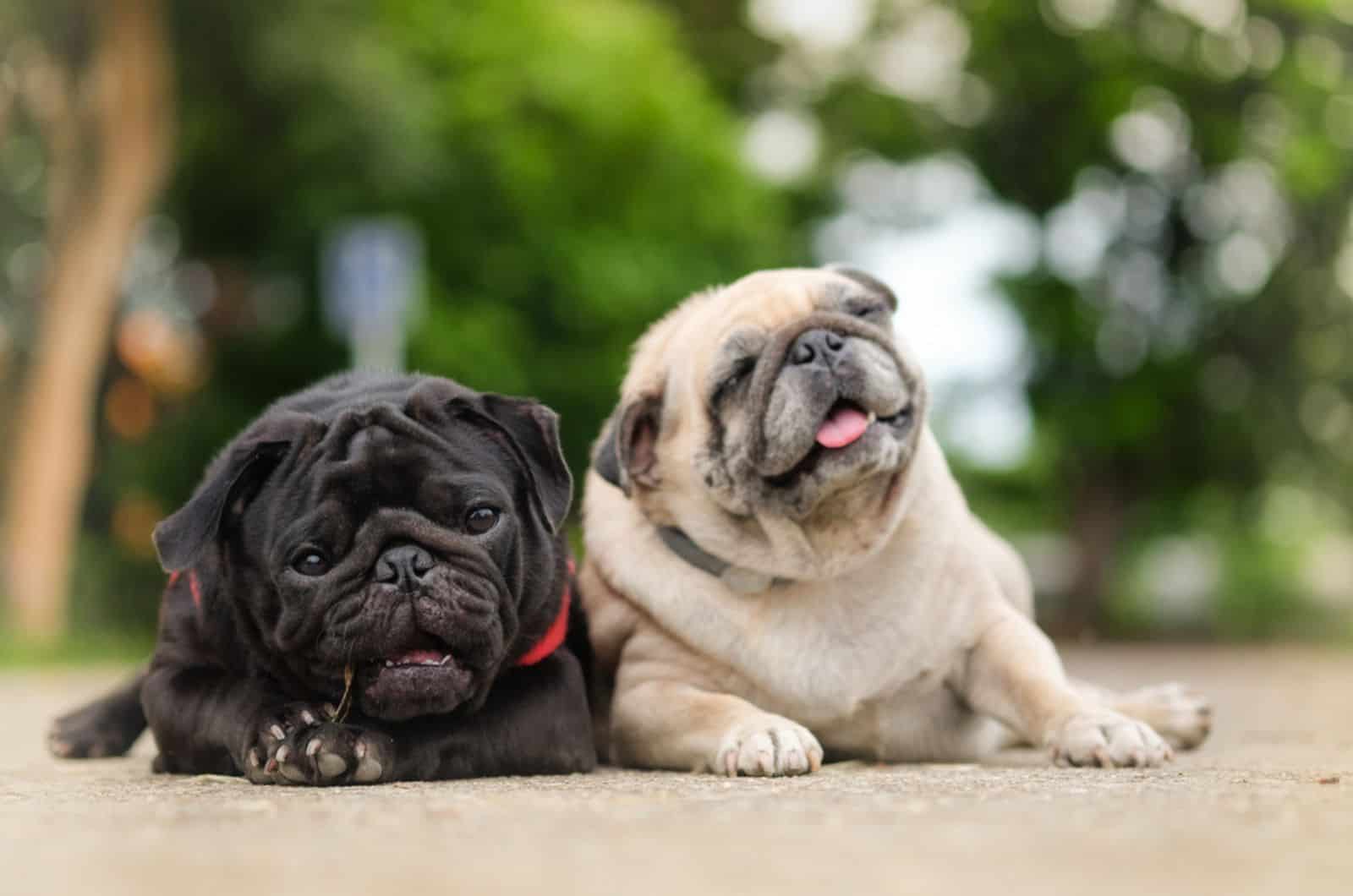
Fawn Pugs are one of the breed criteria for a Pug’s coat, according to the breed standards of pedigree dogs of major kennel clubs throughout the world.
Fawn and black Pugs are the only two coat colors recognized by the American Kennel Club (AKC) for the Pug breed. In general, they adhere to the rules established by the Pug Dog Club.
Although they cannot participate in show rings, non-standard Pug colors like silver fawn, brindle coats, and even apricot Pugs can be certified by the AKC.
Three Pug colors are accepted by the Canadian Kennel Club: silver fawn, fawn, as well as black. The term “fawn” can, however, refer to any hue of fawn, which includes light or dark apricot fur hues on a CKC Pug.
The Kennel Club of the U.K. recognizes four coat colors as breed standards, comprising silver, and apricot-colored Pugs, in addition to either fawn or black Pugs.
Final Word
Small dogs with the fawn Pug coat color, known as fawn Pugs, delight their families with their funny expressions, unwavering loyalty, and loving personalities.
Pugs, along with French Bulldogs, are indeed a brachycephalic breed, and they might not be the healthiest dogs around. They may live a long life, though, if given the right care and dedication.
They are appropriate for anyone who is aware of their obligations as pet owners because they are typically kind to kids and other animals. Training these Pugs won’t be a challenge because they are intelligent as well.
They may also develop a small amount of attachment to their owner; therefore, you must pay them enough attention. Being a pet owner involves more than just feeding and grooming your animal.
Read Next: 11 Reasons Why Pugs Are Ugly For Real
